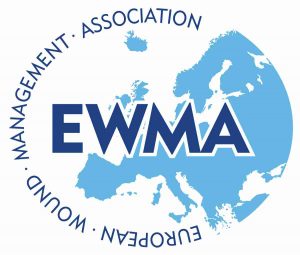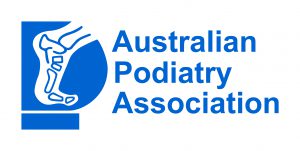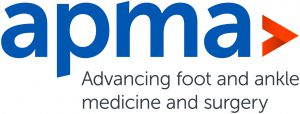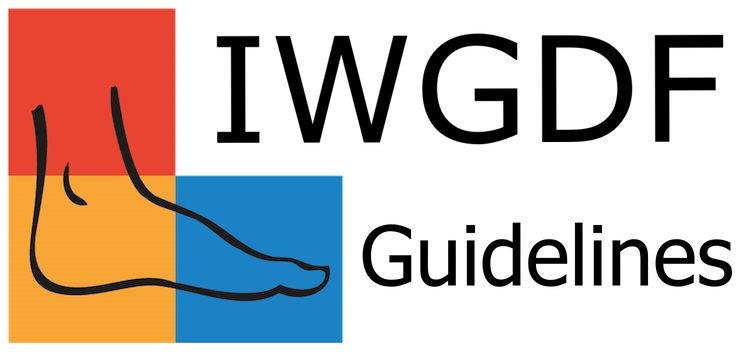These are unprecedented times, where a global pandemic disrupts all aspects of local clinical practice. Yet, providing care for people with diabetic foot disease remains crucial: as clinicians caring for these patients, we can play our role in the Corona-crisis, by doing everything we can to keep our patients with diabetic foot disease free from hospital. Every hospital bed not needed by a person with diabetic foot disease (DFD), gives room for a patient suffering from Covid-19.
However, we are hearing stories from all over the world that diabetic foot care is under pressure, and evidence-based care is nearly impossible. At the same time, we are getting questions from people on the ground: what should we do now?
On this website, we are collecting questions from diabetic foot clinicians, and match them with answers from our global network of content experts. These answers should not be seen as medical advice, and readers may not rely on the application of any information as being applicable to specific circumstances. We do not assume liability or responsibility for damages or injury to any person or property arising from any use of any information, idea or construction on this website. However, in these extraordinary times, we do whatever is within our abilities to bundle our expertise, to continue to provide the best care possible for people with diabetic foot disease.
Content on this website is provided by experts from IWGDF, Diabetic Foot Australia, D-Foot International, EWMA, College of Podiatry, and Foot in Diabetes UK.
Have you got a question for the network of global DFD experts?
Round One of the global DFD Q&A is now open and you can ask a COVID19/DFD related question to the network of global experts under the headings listed below. Questions will be grouped under topics, discussed by the network of experts, with those selected as the highest priority released here in the coming weeks. We may not be able to answer your exact question, but in the face of a global crisis, we hope that collectively we can help each other make the best local evidence-based decisions with the global minds and resources we have available to us.
So click on the ‘Ask a question’ buttons under each section to submit!
Priority Recommendations
1 – Most patients with DFD do NOT need to be hospitalized.
Just to remind clinicians that most patients with DFD do NOT need to be hospitalized. Hospitalization should generally be reserved for those with severe infection (i.e., systemic manifestations, suggesting possible sepsis) who require urgent diagnostic tests and surgical assessment, as well as antibiotic and supportive treatment. Specifically, hospitalization is generally NOT required for: 1) initial assessment of any DFD, including most cases of infection and ischemia; 2) initial diagnostic testing (plain x-rays, blood tests, cultures); 3) antibiotic therapy for mild or moderate infections (oral administration of highly bioavailable agents is generally sufficient, including for bone infection). But, implementing non-hospital care requires either a multi-disciplinary foot clinic or a well-established network of individual clinicians working together with agreed-upon referral arrangements (via physical or telemedicine means).
2 – Triage as soon as you can.
We are triaging as soon as we can. We classify the severity of the lesion at our multi-disciplinary team as soon as possible. Patients with high risk severity for limb loss (severe infection or severe ischaemia) we discharge into hospital as soon as we can. Patients in postsurgical setting or with moderate risk severity for limb loss (infection or ischaemia), we treat in outpatients if we can and then plan homecare services. Patients with lesions of less severity (no infection), we organise a telemedicine follow-up with pictures &/or videocall with their caregivers or family. We also pay attention to our PPE measures.
3 – Consider alternative services
For those with DFD and less severity of limb loss, consider alternatives to outpatient clinics such as telemedicine, setting up clinics in other locations away from the hospital (e.g. indoor gym, mobile health centers) or home visits. See a more extensive article about these alternatives by Rogers, Lavery, Joseph and Armstrong here. See also the telehealth section.
The question around minimal PPE is a very challenging one to answer really – unlike in the ICU environment, there has been very little research conducted in outpatient setting such as diabetic foot clinics. Furthermore, there is such wide variance in local, national and international recommendations for PPE usage for almost every possible setting, including for diabetic foot clinics. Adding to this challenge is the fact that we have seen PPE advice from the government in the UK evolve on almost a weekly basis. We are sure this is also the case in most settings around the world and optimal PPE recommendations remain, at best, very fluid.
At the beginning of the COVID-19 situation we were less distrustful, and we used to follow the minimum standard, apart from when we changed (total contact) casts. This served us well, and we are both proud of the fact that no member of the team has had active COVID as yet. However, at present our clinic is based in one of the epicentres of the COVID-19 pandemic in the UK. Therefore, we now approach all our patients as suspected COVID cases.
Our diabetic foot clinic has since prepared a PowerPoint of how we presently approach patients in our diabetic foot clinic during this pandemic (slide 1) and what we think the absolute minimum standard should be to treat patients in our clinic (slide 2). In addition, safe donning and doffing of PPE is important, and careful handwashing remains key.
Slide 1: While we change gowns and gloves between every patient, the use of respiratory masks, face shield/eye protection is subject to sessional use rather than single use. Each session is 3-4 hours.
Slide 2: All equipment is changed after each use apart from the face shield/eye protection.
Ultimately, the role of PPE is to safeguard both the patient and the health professional. Good PPE standards should not be underestimated as they also embolden health professionals to actively participate and provide high quality diabetic foot care in these unprecedented times.
Telehealth
Many DFD clinicians around the world are now shifting to telehealth. The most frequently used method by our clinicians are photos in combination with instant messaging, as these are accessible for many patients or their carers. But, be aware that diagnosing based on a photo is not very reliable, and even triaging for treatment urgency differs between clinicians (see the evidence here). If possible, try to obtain additional information, such as with temperature monitoring, asking questions of patients via a videocall, or even assess the photo with multiple clinicians.
Telehealth can not only be used for ulcer assessment, but also to provide self-care advice to your patients and their carers/nurses, to check their offloading and their dressings, and to discuss other questions. The reimbursement for telehealth differs per country. For the USA, this excellent article by Rogers and colleagues provides helpful guidance.
Also, see this video by David Armstrong for some inspiration.
– Ask your patient to take off their shoes and socks and show their feet
– Give tips and advice on self-care, whether it’s for a foot ulcer or ulcer prevention. Ask a patient to show you how they will be doing it, you may get unique views into someone’s home and someone’s self-care abilities.
– Discuss a patient’s psychological needs. This may actually be less confronting now it’s not face-to-face, and patients may open up even further in these special times. Use that as an opportunity to ask how your patient feels. See “patient advice” for more details.
– Provide advice on offloading, whether it’s for an ulcer (see offloading section) or ulcer prevention (where the importance of footwear at home should be stressed).
– Always register telehealth consultations in the medical file of your patient.
– Don’t forget to tell your patient that the telehealth consultation is done in stead of a normal consultation.
– At the end of the consultation, ensure your patient knows who to contact when their foot status changes.
Patients with limb- or life-threatening problems should always be seen urgently. See priority recommendations above or the triage systems here, here, here and here.
However, if you know your patient does not have life- or limb-threatening disease, here are some factors to take into account to triage for telehealth or live consultation.
Patient-related factors:
– We consider our patient’s comorbidities, and thereby their vulnerability if they would be infected with the Corona-virus, such as elderly, people with heart disease, people who use immuno-suppressants, people with lung diseases or people with high blood pressures.
– We consider patient’s ability for self-care, or their assistance in care. The better the care, the lower the need for live treatment.
– We consider if a patient will know when to approach in case of worsening of their condition.
Foot-related factors:
– We consider the severity of the foot and leg, in light of ischemia and (risk of) infection.
– We consider foot deformities and presence of pre-signs of ulceration (see further at the prevention tab)
– We consider past treatment frequencies.
Patient Advice
First, we discuss hygiene and protection in relation to the corona-virus, to ensure our patient is aware and capable of protecting themselves.
Second, we discuss glycemic control, which may be harder during a lockdown. We try to arrange support in glycemic control if needed.
Third, we discuss the need to wear their prescribed offloading device or footwear at home as much as possible. This is very important at this time of limited physical resource or treatment options and try and check your patient is doing this by telemedicine.
Fourth, we discuss their daily exercise in times of lockdown. We try to motivate our patients to create an exercise routine compatible with their conditions, and with limited day-to-day variations.
Fifth, we discuss psychological needs in this uncertain times. See extensive answer below for more information.
Consulting with patients over the phone or via telemedicine regarding their feet also offers a good opportunity to check in with how they are coping psychologically. We know that people who live with diabetes can experience greater levels of emotional distress, alongside a higher incidence of psychological presentations such as depression and anxiety. Understandably, the impacts of Covid 19 may serve to heighten psychological distress in all of us at this time and in particular people who may be vulnerable to environmental stress. For people with complications such as diabetic foot ulceration (DFU), fears around how they may receive adequate and safe medical care for their foot complications are understandable in the current climate.
When talking to people during the consultation it is important to directly ask how they are managing psychologically / emotionally, both with management of their feet but also in life more generally given the Covid 19 crisis. Offering the opportunity to discuss feelings, thoughts, current concerns and challenges can be very valuable for patients. Listen out for what patients are telling you directly, but also be aware if there are changes in their moods and behaviours that are recently arising, for example, less interest and enjoyment in life, more tearful, excessive time thinking about complications such as ulceration and amputation, or feelings of hopelessness. Spend the time that you can listening to your patients, normalising their experiences (for e.g., “it is perfectly normal for you to feel like this in these times”, or “many patients I am seeing feel the same as you, it is very understandable that you would feel this way”) and empathising with what they are saying (for e.g., “I hear you are worried about getting care for your foot ulcer at the moment, it’s a tough time”). It can be very powerful also to acknowledge any positives in a patient’s situation and their personal strengths and resilience.
Having a clear and manageable plan for caring for their feet is an important step for empowering patients to cope with health related worrying. Emailing written materials and additional resources can be helpful, linking to patient communities / community supports where possible and providing a point of contact for help if available (e.g., phone number, email, etc). Reinforcing your patients’ natural resilience and ability to manage can also be very empowering for them. Encouraging patients to focus on aspects of their care that they can control, can help reduce worry about what ‘might’ happen (i.e., fear of the unknown) and aims to direct their energy towards adherence to management plans. Asking the patient what else they would find helpful to support them psychologically / emotionally at this time with foot related concerns can also be a good strategy, to allow tailored supports to be devised collaboratively.
It is very important to link patients with professional mental health supports, in consultation with them, if you suspect your patient requires additional help. Some patients may express suicidal thinking (for e.g., “ sometimes I don’t want to go on”, “life is getting too hard with all that’s happening in the world”) or intentions, in which case immediate referral for professional support is essential. And for all patients, good self-care (e.g., connecting with others, daily enjoyable activities, adequate sleep and food) is very important. There are many great resources available currently to support psychological wellbeing during Covid 19, for example the World Health Organisations’ #HealthyAtHome campaign https://www.who.int/news-room/campaigns/connecting-the-world-to-combat-coronavirus/healthyathome We also suggest that you seek out local resources relevant to your country and situation.
This time will pass and things overall will improve, it is important for people to know that there is support available and we (their health care practitioners) care about what happens to them.
Our patients are a vulnerable group and almost all have been advised to self-isolate. Every day we have personally phoned patients who have cancelled their appointments or simply not attended, because they are afraid, or they thought we would not be running the clinic. After discussion many have agreed to attend community services with cameras. Some have agreed to attend the multidiscipinary clinic in its new community hospital setting. Most do not realise that they are more at risk of being admitted with foot disease and not having their disease treated or being in hospital in a bed next to a COVID patient – as will inevitably happen sooner or later when we can cohort no longer. This takes several hours a day – but is better coming from their clinician than from the admin team.

Infection
These are the questions we typically ask:
How long have you had the ulcer? The longer the duration, the more likely it will be infected.
What do you think caused the ulcer? Traumatic wounds with a non-sterile object increase the risk for infection.
Do you have pain or tenderness in the ulcer or surrounding tissues? Presence of pain or tenderness, especially in a patient with known peripheral neuropathy, may indicate infection.
Has there been any drainage from the ulcer? If so, please describe it? If it is white/yellow/ greenish, non-translucent and thick, it is likely pus, which strongly suggests infection.
Has the wound had an unpleasant odour? If so, for how long? Presence of an unpleasant odour may indicate infection, especially with obligate anaerobes.
Have you felt feverish or had chills/rigors? Presence of fever, chills or rigors may indicate infection or severe infection.
Have your blood glucose levels (if the patient checks) been more elevated than usual? This is common with an acute infection.
Have you used any topical or systemic medications (antimicrobial, antipyretic, home remedies) specifically to treat the ulcer? These may obscure or cause infection.
Since we diagnose infection based on the presence of ≥2 classical signs/symptoms of inflammation (± so-called “secondary” findings suggestive of infection), the resolution of these findings (with no new ones) should reasonably suggest antibiotic treatment can be discontinued. Thus, I would ask about the current presence or absence of: pain/tenderness; local warmth or redness; induration/swelling; purulent secretions (opaque, thick, white/yellow/green discharge); or, fever. The patient should be able to provide observations of each of these findings. The clinician could also ask about the wound having foul odour, undermining of the rim of an ulcer, or non-purulent secretions. If video support is available (even via a mobile phone’s camera), the clinician can assess the patient’s reported findings; this is especially useful if the patient has taken photos/videos over time, to allow the clinician to assess the likelihood of improvement.
We sometimes give patients a prescription “in advance”, which they can use when we advise them. Or even more desperate, we give patients a “rescue pack” of antibiotics, to be used when they suspect an infection.
Almost all cases of osteomyelitis of the diabetic foot occur by direction extension from an overlying soft tissue infection. rather than by hematogenous spread. This type of contiguous osteomyelitis rarely causes an acute septic presentation (although the overlying soft tissue infection may do so.) Thus, many (perhaps most) cases of diabetic foot osteomyelitis can be treated in an outpatient setting. What is required are:
- Making an initial accurate diagnosis (probing the wound for depth a palpable bone; obtaining plain x-rays; checking serum inflammatory markers, especially ESR)
- Obtaining material for culture (preferably bone, which a clinician can often do with a percutaneous biopsy in an outpatient setting)
- Prescribing an initial empiric antibiotic regimen, then modifying as needed based on the culture and sensitivity results. If bone debridement or resection is required, this can sometimes be done by a qualified surgeon in the outpatient setting.

Offloading
There may be no more important time than during this crisis that our patients need effective offloading. We know that effective offloading has high-quality evidence to accelerate ulcer healing, prevent deterioration, reduce the chance of infection and hospitalisation. And hospital is not where we want our patients to be during this crisis if they don’t need to be.
Additionally, effective offloading typically reduces the need for more frequent ulcer debridement and sometimes dressings. Therefore, effective offloading may also be a strategy to help reduce the number of necessary clinical visits during these times. Patients will still need to come in for debridement and dressings at some stage though, but effective offloading may help reduce how often they need to come into the clinic especially if your patient can’t come in regularly, or clinical time and trained clinicians are limited.
Effective offloading really means trying to reduce your patient’s plantar pressures and weight-bearing activity as much as possible with the best and safest offloading treatment you have available. More technically, offloading means reducing the mechanical stress at the foot ulcer, and mechanical stress is an accumulation over time of direct pressures (plantar pressures) and the frequency of these pressures (weight-bearing activity).
The best (i.e. first-choice) offloading treatment recommended by IWGDF are non-removable knee-high offloading devices, such as total contact casts or knee-high walkers made irremovable. However, that recommendation was made in non-crisis times for when our patients can come in to see us regularly to change their dressings, check their ulcer and reapply their offloading device.
During these crisis times though we are finding that patients can’t come in as regularly for a variety of reasons – lack of trained clinicians, resources and our patients are self-isolating – so we are using much more of the IWGDF second-choice offloading treatment, such as removable knee-high walkers. This means that the patient or their carer can remove their walker, change their dressings and inspect their ulcer (especially for infection) between visits if they can’t get in to see us, plus, it gives us some flexibility in terms of when we can see them again in the clinic.
But, at the same time, we are also strongly advising our patients that there may never be a more important time to adhere to wearing their walker at all times for their foot and general health than during this crisis. We try to impress on our patients that the better they can look after their foot ulcer (e.g. wearing their device all their weight-bearing time), the less chance they have of having to go into hospital for their foot, and if they can avoid hospital they may reduce their chance of a COVID infection too.
But, if you don’t have knee-high walkers available, then consider the IWGDF third-choice offloading treatment which are ankle-high devices, such as ankle-high walkers, forefoot offloading shoes, healing sandals etc. If you don’t have those either then consider the fourth-choice which is felted foam and appropriately fitting footwear. And if you can’t get any device to your patient in these times, or there are none available, this may mean simply going back to the advice we used to give 30+ years ago which is recommending your patient stay off their feet (e.g. stay in bed, on the couch watching tv etc) as much as possible and if they do need to walk then to make sure they wear appropriately fitting footwear.
We are facing this problem all day here in Italy, and since our outpatient clinic is still open, we decided to go with a cast (or non-removable walker) in cases of complex ulcers with high risk of worsening, like hindfoot ulcers or deep forefoot ulcers (but obviously only when there is no sign of infection and if we can still see those patients regularly). For other plantar ulcers, we now mainly use removable cast (or removable walker) with offloading insole and appropriate dressings and we ask patients and nurses to email us every week a picture of the dressing and ulcer, organising where it is possible an outpatient clinic about every two weeks.
At our center in the UK, we are now facing the problem of not having access to the plaster room as we’ve had to move clinical location due to the COVID impacts on services. For now, we have gone back to using felted foam with off-the-shelf walkers. Any offloading is better than no offloading, but this requires us to keep a close eye on these patients. Also, we find providing a patient with a TCC, but without having the opportunity for regular visits to check on their progression, may cause harm when an infection can go undetected. At this moment, not doing harm is more important than best-practice care, which argues against TCC – unless it can be safely provided and followed over time.
In our centre in India, we ask the patients to use the best offloading device they can get like a removable walker/off-the-shelf walker if they are unable to travel to the clinic due the complete lockdown. We also tell them to email or WhatsApp a photo of the wound every week to the podiatry team as a follow up to see how their ulcer and treatment is going.
Interestingly, in our centre, one side benefit from the quarantining/self-isolation measures we are starting to notice is patients don’t seem to be weight-bearing as much as usual and in turn their ulcers are not requiring as much debridement and treatment. This reduction in weight-bearing activity due to the crisis seems to be a good thing for our patients’ ulcer healing in the short term, but we still make sure we strongly educate our patients to wear their offloading device (preferably a walker) all the time as well, even in quarantine, so we can reduce their plantar pressures too and hopefully heal their ulcer even quicker. The quicker we can heal their ulcer, the less clinic treatments they need and the less chance they need to go to hospital care during this crisis the better. In saying that we also provide our patients with suggestions on non-weight-bearing activity, so they can still get their exercise to help their general health, such as upper-body exercises.
In our centre we ask our patients to send a video by WhatsApp or similar, of them wearing their offloading device and our team gives them suggestions on how they should walk with their offloading device. We also ask them to record and inform us how many hours per day they are wearing the offloading device so we can start to get a feel for their adherence levels and the education they need on adherence. We know self-reported adherence is not an ideal measure, but it is one that can be very handy at the moment.
We also ask patients and nurses to email us a picture of their offloading device, dressing and ulcer every week for us to review and discuss with them and then organise when they need an outpatient appointment. We find this is a very useful time to also remind them of how important it is to wear their offloading device for their foot and general health and discuss ways with them to help increase their device wearing time.
When our patients can’t come in frequently we are trying to get as much remote information from our patients as possible to try and determine how effective their offloading is from afar. This includes getting pictures of their offloading device, ulcer and dressing. Also, for those with smart phones, Fitbits or similar we are asking them via instant messaging or videocall how many daily steps they are registering to get an idea of their daily weight-bearing activity levels. And just recently for those with home thermometer guns – that many patients seem to have purchased during this crisis – we have asked them if they can check the temperature of their ulcer compared to the same location on the other foot each day to see if their ulcer is consistently hotter or not. Bearing in mind these thermometer guns can have a large error range, we think they may provide some additional useful remote information, but this is anecdotal at this stage. In short, we are looking at various ways of trying to get as much remote information as possible to inform us to how effective our patients offloading is if our patients can’t come in to the clinic as frequently as they used to.

Wound Healing Interventions
If you cannot see your patient regularly, it is most important that your treatment does no harm. Use simple non-adherent dressings, that patients or their carers can use without the need for specialised equipment or experienced clinicians. Ensure your patients or carers can continue to monitor the patient’s ulcer and feet for infection or other signs of deterioration. In addition, make sure your patient knows who to contact and where to go if their ulcer becomes infected or deteriorates (see priority recommendations at the top of this page)
When more advanced dressings can be used safely, this may be the time to be more liberal in whom you’re prescribing such dressings for. When evidence is available for specific types of ulcers, but we think that a patient with another similar type may also profit from such a dressing, we now tend to give the patient the option of using such a dressing if the dressing is a small extra lifeline for the patient in these times of crisis.
But, when dressing interventions require resources that can only be used by trained clinicians to be able to use, such as for negative pressure, we have now unfortunately stopped using them for the time being if care by trained clinicians cannot be guaranteed and instead we use simpler dressing options.
For patients that require urgent debridement, we do everything we can to have them visit our clinic. For other debridements, we have visiting clinicians still in place, who can visit patients in their home if and when needed. Research has shown that the need for debridement can be reliably assessed based on photos.
Since dressings in our case will mostly go via pharmacies (that are still open) or companies that provide the dressings, we do not yet have additional measures in place to support patients with obtaining the simple non-adherent dressings.

Peripheral Artery Disease
If limb-threatening ischemia (acute or chronic) is suspected, then the benefit of revascularization to improve blood perfusion and help with wound healing and limb salvage typically outweighs the risk of contracting and suffering from COVID-19 infection within the hospital setting. However, vascular patients remain some of those at the highest risk in terms of their high prevalence of comorbidities associated with poor outcomes in COVID-19, so this must be judged on an individual patient basis and in association with the patient’s wishes.
If a patient has limb or life threatening ischaemia or infection, it is advisable that prompt revascularization is performed by the dogma ‘time is tissue’. A day case procedure to minimize in-hospital stay is advisable if possible – or alternatively this may be able to be provided in an outpatient (office-based) facility, if that is deemed appropriate.
Ultimately, if it is not possible to proceed to any revascularisation due to healthcare rationing, then it is imperative to continue to provide the best foot care possible, whether this be via telemedicine or face-to-face appointments with members of the MDT with appropriate PPE. In addition, we must remember that some patients do heal their ulcer without revascularisation, despite significant perfusion deficits.
Standard vascular assessment with the help of the doctor over the phone or over video-call can help distinguish between severe chronic limb threatening ischemia and more moderate stages of peripheral artery disease. Rest pain of the foot or toes or at the areas of the wounds when the patient is lying flat (usually overnight) is a strong hint of severe peripheral arterial occlusive disease. The same applies if there is severe tissue loss or new dry gangrene or wet gangrene that mandates urgent surgical debridement to avoid sepsis. Ask the patient about the presence of bad odour over the wound, newly established edema, loss of warmth or sensation, or systemic features of infection.
The patient may also be able to execute the ‘Buerger’ examination to test for arterial insufficiency over a video call with the instructions of a doctor, podiatrist or nurse. The patient is instructed to raise the affected limb with the help of a friend or relative. Blanching (white cold foot) with progressive numbness and pain at the toes that develops within a few minutes of limb elevation is strongly suggestive of severe arterial insufficiency. On the contrary, when the patient is instructed to lower the leg below the horizontal plane, then usually the rest pain is relieved and cyanotic congestion of the foot is noted. No change of color should occur if arterial circulation is normal regardless of limb position.
Yes, it has caused some concern that some patients have these skin lesions on their hands and feet that maybe linked to COVID. They seem to present with ischemic or necrotic looking lesions and are possibly due to a distal necrosis process. These findings were first described by an Italian physician during the COVID crisis and there has also now been one small study from Italy reporting on some skin presentations in patients with COVID, but not exactly the same. Now in Spain too there are dermatologists reporting some cases.
What we know so far is that these lesions seem to occur in children, sometimes without any other symptoms. Some physicians have also suggested that COVID may produce alteration in coagulation and lesions at vessels walls and that could be the cause of these lesions. However, it seems that all patients in these reports are only suspected of having COVID because they have been in contact with positive COVID patients – usually their parents – but they are mostly yet to have a confirmation by test.
The Spanish Council of Podiatrists has launched an alert to the podiatry community for recording potential cases with this presentation as most of these cases to date have been anecdotal and reported in children only. This has been picked up by the world’s media. We are a little concerned though, that if parents find out about these lesions, that they may take their children to the hospitals unnecessarily for COVID testing when this hasn’t been proven yet. So far we aren’t aware of these lesions happening in diabetic foot patients though. But with podiatrists both caring for people with diabetic foot disease and potentially seeing these lesions in children, we think it is important to share this information here.

Prevention
Those with the highest priority are patients whose ulcer has just healed, and is in that very early remission phase. As a rule-of-thumb for a cut-off, we take 6 months since healing, but this also depends on other characteristics. Because highest priority should also be given to those with pre-signs of ulceration, such as abundant callus, hemorrhage, or a blister. Ulcer pre-signs are a strong predictor of ulceration, and instrumental treatment can be given to care for these pre-signs.
We would give moderate priority to all high-risk patients with foot deformities or lower-extremity amputation, provided they have been ulcer-free for at least 6 months and do not have pre-signs.
All other patients we would still try to be in touch with every 3 months, if time and care allows. We instruct these patients and their carers to contact us when they see an ulcer pre-sign.
For those at high-risk that will not be followed in clinics anymore, we schedule telemedicine appointments regularly (1-3 months) in which a specialized foot care clinician (any professional class available) would request the patient to show the foot. Make sure you have their medical history on your screen, so you are aware of their situation. Specifically point your patient and their carers towards presence of ulceration or ulcer pre-signs. Check if they understand and ask them to repeat it in their own words.
If it’s a new patient, first start by asking questions for medical history taking as you would normally do. Try to obtain information on loss of protective sensation by explaining the touch-the-toes test to a carer (if available). Screen for foot deformities by looking, and by asking your patient or their carer (if possible) to show you range of motion of their joints.
For urgent cases, have a schedule with availability (1 or maybe 2 hours) every day for immediate contact, so they can connect to the telemedicine service and show their feet.

Classification
Using SINBAD as the basis for communication means that clinicians don’t forget the basics. The presence or absence of each variable should be reported. This is particularly important if triaging is being done using images, as, for example, without knowing that the patient has PAD, an image without significant erythema and swelling may be misinterpreted as being less urgent. Infection should be characterized using IWGDF/IDSA clinical classification scheme (see infection section for more details).
For those who don’t have SINBAD at hand:
- S: Site (Forefoot = 0; Mid- and hindfoot = 1)
- I: Ischemia (pedal blood flow intact [at least one palpable pulse] = 0; Clinical evidence of reduced blood flow = 1)
- N: Neuropathy (portective sensation intact = 0; protective sensation lost = 1)
- B: Bacterial infection (none = 0; present = 1)
- A: Area (ulcer area <1cm2 = 0; ulcera area >1cm2 = 1)
- D: Depth (ulcer confined to skin and subcutaneous tissue = 0; ulcer reaching muscle, tendon or deeper = 1)
Classifying PAD beyond the pedal pulses (as scored in SINBAD) is recommended to be done according to the I (from Ischemia) in WIfI. This is based on a combination of Ankle-Brachial Index, Ankle Systolic Pressure and Toe Pressure. But that means these values should be available or should be obtained in a valid way. For alternatives, see the section on PAD.
Furthermore, classifying PAD and deciding on subsequent treatment is even more complex as it also really depends on the local situation and availability of vascular services. In the IWGDF guideline, using WIfI is recommended as useful indicator for limb salvage. However, this is only the case if you have a vascular service to refer to and/or the service is still running in these difficult times.
Above all, ensure all SINBAD items are covered. Specific detailed classifications of infection and PAD are discussed in the respective sections. In addition, ask for the smell of the ulcer.
Further, ask for photos or videos, and ask these to be made daily.
While assessing foot deformities via telehealth is clearly not optimal care, in times of COVID this is a valid alternative. We suggest to ask for photos of the feet of your patient, with the patient standing in upright position (i.e. weight-bearing), and with photos from directly in front, from the medial and lateral side, and from diagonally above and front. That would allow you to at least observe deformities hallux valgus, claw toes, hammer toes, charcot deformities, pes planus, flat foot and amputations.
But be aware that deformities such as prominent metatarsal heads or other bony prominences, hallux limitus, hallux rigidus, or limited joint mobility cannot be assessed reliably based on a photo. If another person is available via telemedicine, such as a significant other or a nurse, one may consider to ask them to check for these, as we think it is feasible to assess these with a video connection, while instructing someone else.
Helpful Resources
World Health Organization (WHO)
WHO free COVID-19 training courses
Johns Hopkins University COVID-19 website
US Centers for disease Control and Prevention
New England Journal of Medicine COVID-19 information
The Lancet COVID-19 information
Elsevier Corona Information Center
NHS (England) Clinical guide for the management of people with diabetes (V2 – 19 March)
American Diabetes Association COVID-19 information
Diabetes UK Covid-19 information
International Diabetes Federation COVID-19 information
Practical recommendations for the management of diabetes in patients with COVID-19
European Wound Management Association information on COVID-19
All feet on deck. Rogers et al. JAPMA 2020
FDUK Lower Limb Amputation Prevention Guidance
D-Foot International Statement
D-Foot Lockdown Academy – free online lectures
Diabetic Foot Australia COVID-19 website
Diabetic Foot Australia triage scheme
Canadian Podiatric Medical Association Covid-19 update
King’s College Hospital tips on diabetic foot care in times of COVID-19
Dutch podiatry guidance on care for diabetic foot disease in times of COVID-19 [in Dutch]
Dutch multidisciplinary guidance on care for diabetic foot disease in times of COVID-19 [in Dutch]
International study looking at the effects of COVID-19 on vascular services
Advice for GPs on diabetic foot triaging during COVID-19
International Society for Prosthetics and Orthotics (ISPO): Information and Tips for Clinics








